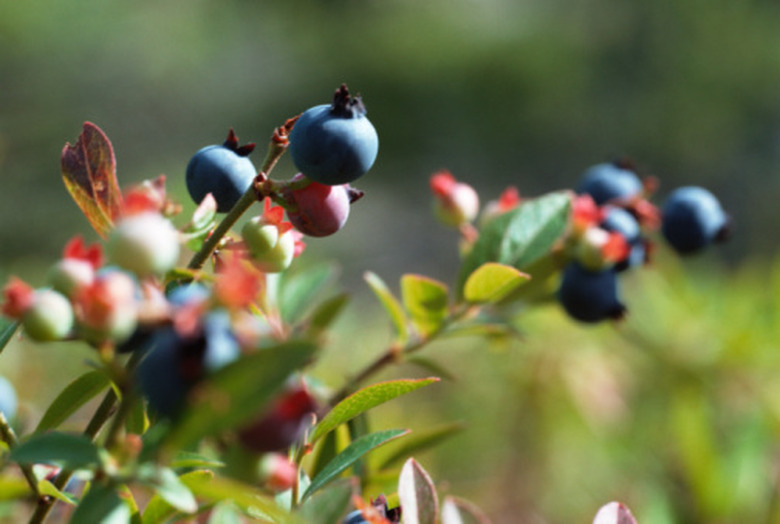How To Grow Blueberries In Maryland
Things Needed
- pH test kit
- Peat moss/soil mix
- Ammonium sulfate
According to the University of Maryland Cooperative Extension, blueberries were growing in the state as early as when the first settlers arrived. While it takes several years for a blueberry bush to produce fruit, the sweet, juicy rewards can make it a worthwhile endeavor. With proper care and a suitable growing location, your blueberries can thrive in Maryland.
Step 1
Choose an appropriate cultivar for the state. The University of Maryland recommends Bluetta, Duke, Earliblue, Spartan, Patriot, Blueray, Bluecrop, Jersey, Elliott and Lateblue. Always start with plants that are 2 to 3 years old, purchased from a nursery.
Step 2
Find a location in your yard that receives between six and eight hours of sunlight each day and is free of other plants. Make sure the pH level of the soil is between 4.5 and 5.0 by using a testing kit. Adding sulfur can lower the pH level, and lime can raise it if necessary.
- According to the University of Maryland Cooperative Extension, blueberries were growing in the state as early as when the first settlers arrived.
Step 3
Create a hole for each blueberry bush. Leave a space of 5 feet between each bush. Ohio State University recommends that each hole be 18 inches wide and 18 inches deep. Place the plant in the hole and over with 4 inches of a peat moss/soil mix.
Step 4
Provide each blueberry bush with a minimum of 2 inches of water per week. Rain in Maryland during the summer season can often be sporadic, so you'll likely need to do this by hand.
Step 5
Prune the plant once it reaches its fourth year of life. After the growing season, trim away the older canes from the base of the plant. Choose the canes that appear light in color and have peeling bark.
- Create a hole for each blueberry bush.
- Provide each blueberry bush with a minimum of 2 inches of water per week.
Step 6
Apply fertilizer once per year right after the bush blooms, but only after the plant's second year of growth. Use ammonium sulfate at the rate of 4 ounces per bush.
Tip
Birds are the biggest potential pest problem for blueberry bushes. Deter birds by placing netting over the plants once berries begin to ripen. County extension educators in Maryland can provide assistance with soil tests and recommendations on soil improvement.
Warning
Blueberries are very sensitive to soil pH levels, so test at least once per year.
